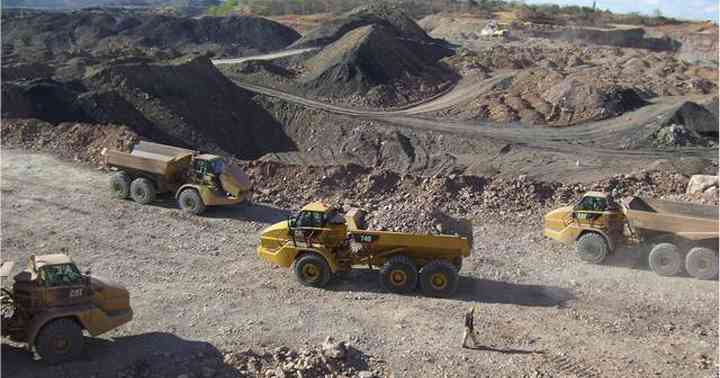
The miners of the country’s second largest platinum in the southern part of the Great Dyke in Zvishavane, Mimosa Mining Company said they will not adjust or shelve their future investment plans because of the much talked about regulations.The mining company, which does not have any local shareholding, said it was waiting for the outcome of discussions between the Chamber of Mines and government on the sector-specific arrangements of indigenisation and empowerment regulations before they submit their “empowerment” plans.The mine which is located on the Great Dyke is in a 50-50 joint venture between two South African companies, Implats and Aquarius Platinum Ltd. “Our shareholders have always had plans to indigenise and localise a certain percentage of Mimosa so it (the Indigenisation Act) is something that is being taken care of. We are not losing sleep over it,” Mimosa’s managing director Winston Chitando said.Chitando said the company was going ahead with its expansion programmes despite the changes in shareholding that the regulations are demanding.The Indigenisation and Economic Empowerment Regulations, which were gazetted recently, require foreign companies and existing businesses to cede 51% shareholding to indigenous people.“The mine will await the outcome of discussions between the Chamber of Mines and government on the sector-specific arrangements of indigenisation and empowerment. Only after the discussions will Mimosa Mining Company submit its own indigenisation and empowerment plans,” Chitando said.He said the expansion was expected to greatly enhance the company’s profitability after posting a loss in the full year to June 2009.Chitando said Mimosa Mine had consistently operated at optimal capacity even during times when most other mining firms closed shop or were put under care and maintenance due to the debilitating effects of the macro-economic instability of the last decade.“We are planning phase six mine expansion and we are undertaking a feasibility study. It must be completed, I would say, sometime early next year. The expansion would bolster revenue generation, profitability, operational costs and annual platinum output, which currently stands at 100 000 ounces per annum,” he said.The mines underground operations manager, Tapson Nyamambi, said the company had platinum ore reserves to last the next 20 years. “The company was operating on a 20-year plan and a platinum ore resource base that can sustain the company for the next 20 years, it has already been developed,” Nyamambi said. “This then means we will be operating a 24-hour shift for the next 20 years. There is 20 years of production and you can see that the company has a future and the capacity to even expand.”Notwithstanding the adverse macro-economic environment in the country, platinum production has been steadily increasing from 500 kgs in 2001 to above 6 000 kgs last year. “Power cuts have often affected out operations. The mine consumes about 20MW a day. We can shed about 5MW and still operate. But if the power utility asks us to shed 10MW we would have to switch off the whole mine,” Nyamambi said.Zimbabwe has the second-largest platinum reserves in the world after South Africa. Mining accounts for about 4% of the GDP and 16% of total annual foreign currency earnings to the country. Mimosa, which has a staff complement of 2 000, in October last year celebrated two million fatality free shifts, a milestone for any mine universally.Some mining experts believe there is considerable potential for expansion of the existing platinum mining operations to production levels that would warrant the setting up of a local refinery. The liberalisation measures introduced in 2009 and the 100% retention of foreign earnings, as well as increased dialogue on investment and shareholding, was restoring confidence in the mining sector. This has allowed closed mines to reopen and resume operations, particularly in gold mining.Although platinum was first discovered in the Great Dyke in 1918, its exploration was overshadowed by that of the Bushveld Complex in South Africa. Focus has returned to the Great Dyke following the increase in demand for platinum.The Great Dyke is a layered complex similar to that of the Bushveld Complex. It extends for 550km and has a maximum width of 11km. Within the Great Dyke four geological complexes are known to contain PGM and base metal deposits. These are the Wedza Complex (Mimosa –– Aquarius and Implats), Selukwe Complex (Unki –– Anglo Platinum), the Hartley Geological Complex (Hartley and Ngezi Platinum Mines –– Zimplats) and the Musengezi Complex. The Hartley Geological complex is the largest of the PGM bearing complexes containing 85% of the known PGM resources in Zimbabwe.On the corporate responsibility side, Mimosa Mine has changed the face of Zvishavane. The company has commissioned 11 boreholes in Zvishavane, a state-of-the-art mortuary at the town’s district hospital and six classrooms and toilets at Dadaya Primary School.Mimosa has built houses for almost all of its more than 2 000 employees under the housing development and home ownership scheme for general workers, supervisors and managers.The mine has also constructed and tarred a 12km stretch of road connecting the Zvishavane-Bulawayo road and the road to the mine, which is also used by surrounding communities.It also has built a clinic for its workers and their dependants and immensely contributed to the construction of schools in surrounding communities, among many other programmes in the area.
Paul Nyakazeya











